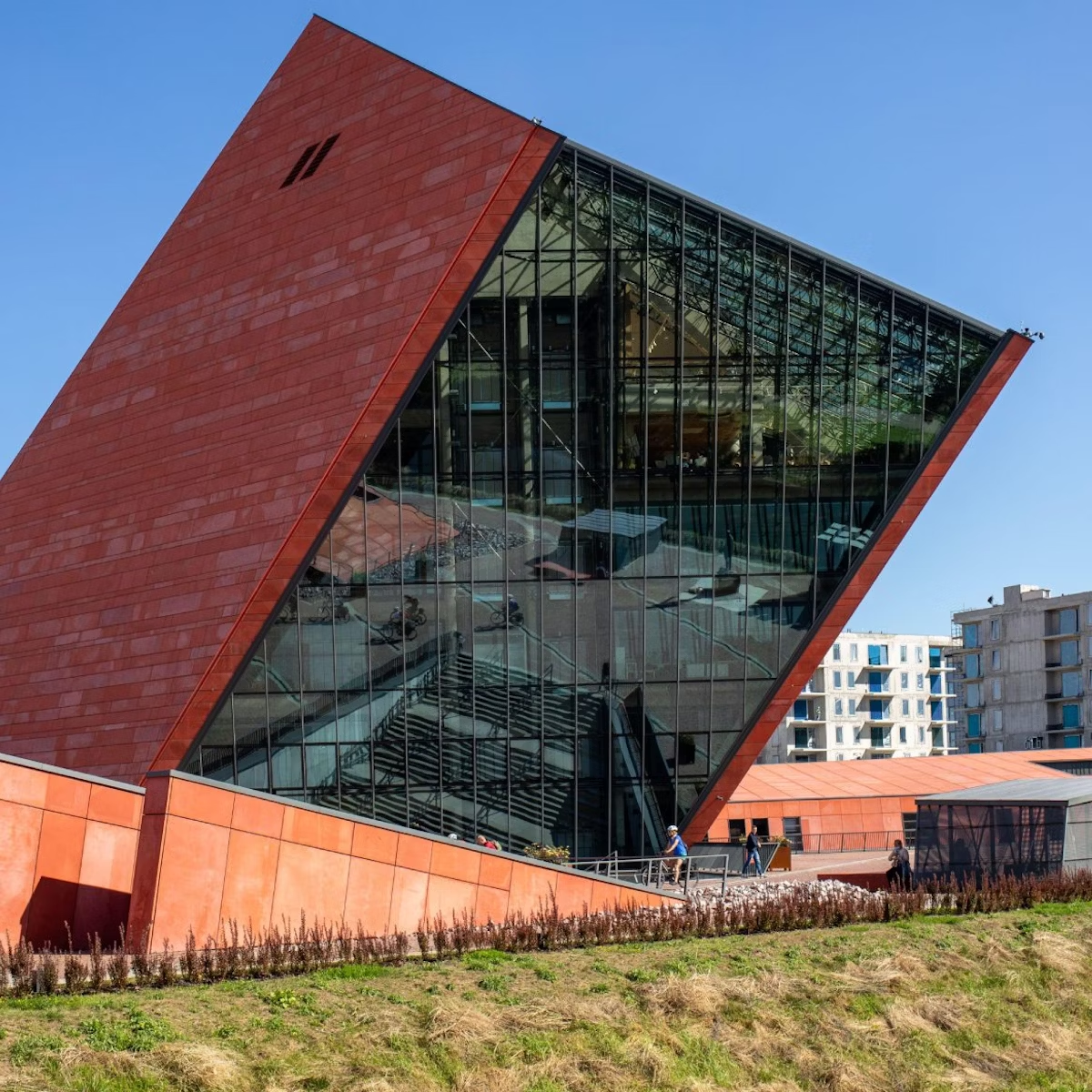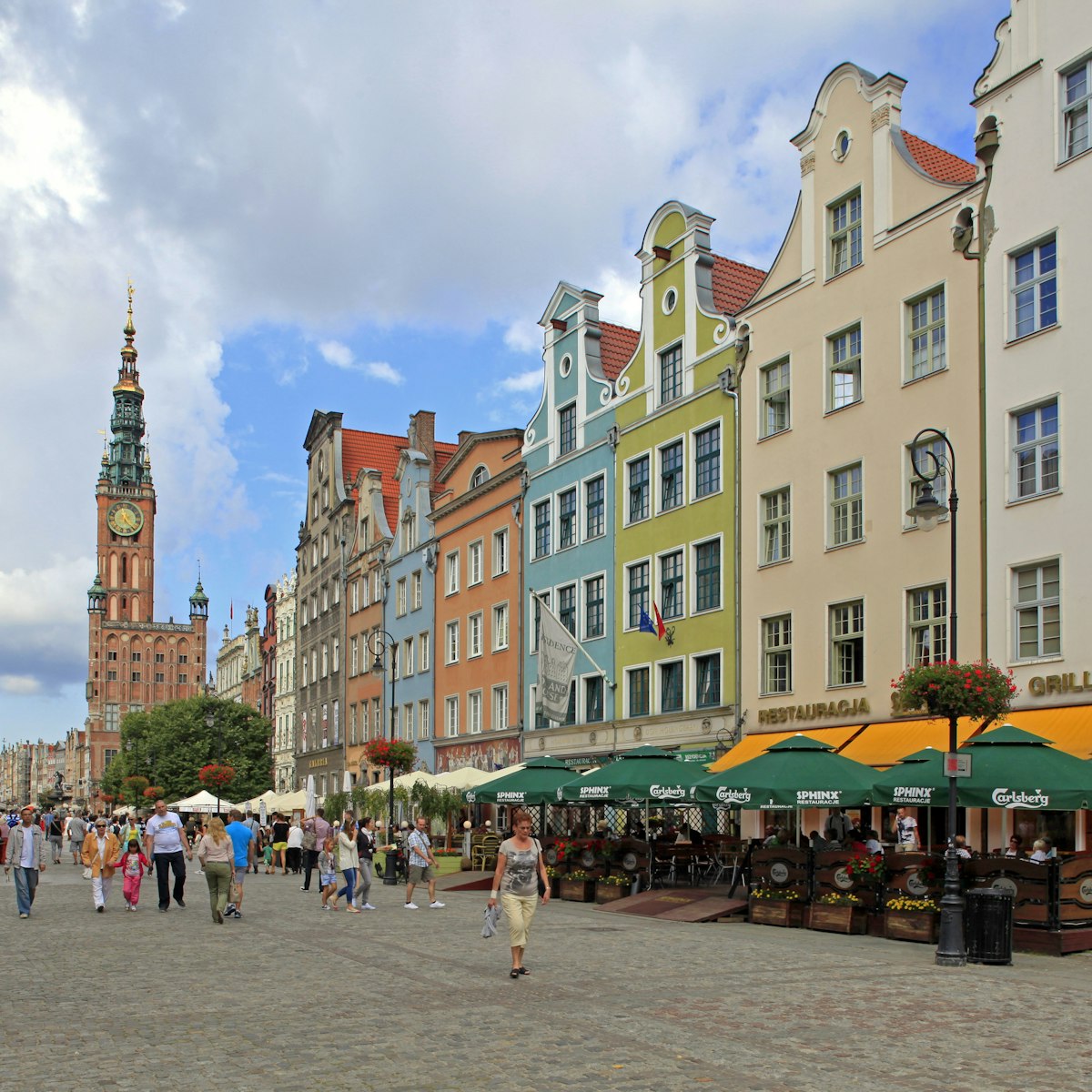Opened in 2014, and housed in a truly awful example of 21st-century architecture (its rusty steel plates were designed to evoke ships under construction), this exhibition has quickly become one of Gdańsk's unmissable museums. Audio guides clamped to ears, visitors wander through seven halls examining Poland's postwar fight for freedom, from the Gdańsk shipyard strikes of the 1970s to the round-table negotiations of the late 1980s and beyond. The displays blend state-of-the-art multimedia with real artefacts. Allow at least two hours.
Each hall is lettered and the exhibition runs chronologically from A to G. Hall A takes you to the 1970s shipyard, with yellow docker helmets lining the ceiling and a battered electric truck, the type Lech Wałȩsa once worked on as an electrician. Film footage includes the negotiations between dockers and the communist regime and the signing of the 1980 agreements (the oversized comedy pen Wałȩsa used to sign is sadly missing but you can buy a replica in the museum shop).
Hall B is all communist-era interiors, a fascinating retro experience that takes you to a prison cell, interrogation room and typical family living room. Solidarity and martial law are the themes of halls C and D, while hall E is a mock-up of the famous round table complete with TV cameras and name badges. An interesting section on the various revolutions across Eastern Europe follows in hall F, while hall G is a spartan affair dedicated to Pope John Paul II.
The special hall opposite the ticket desk hosts Polish-themed exhibitions, which are usually free.







